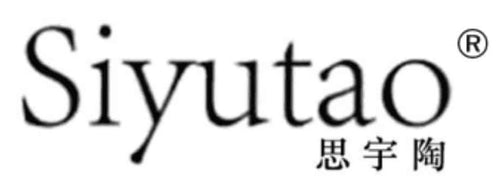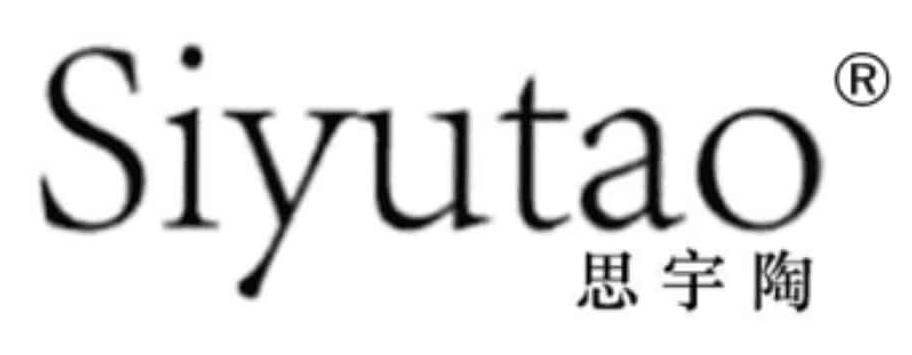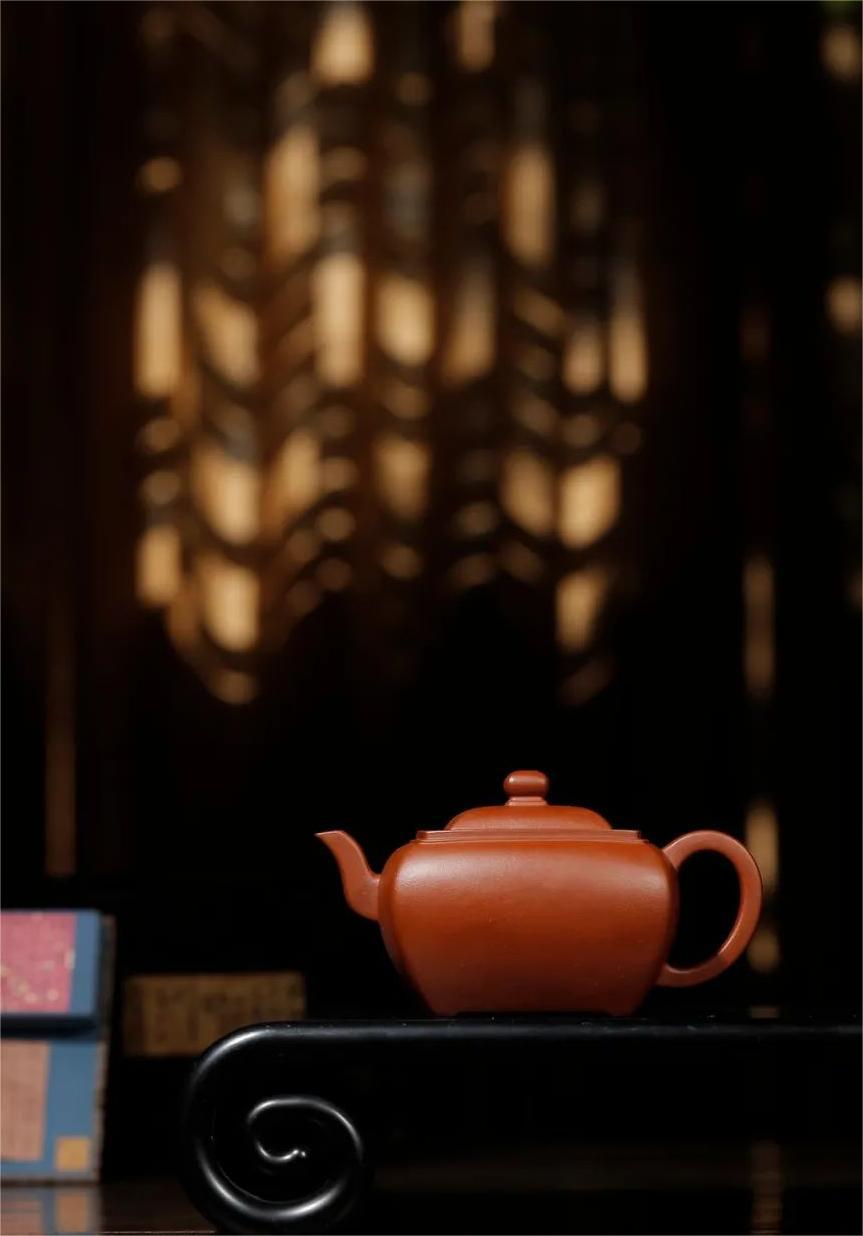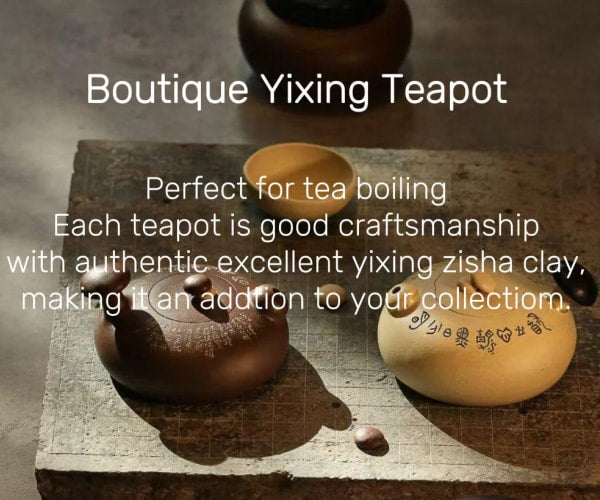How to Determine the Age of an Antique Yixing Teapot: A Collector's Guide
1. Historical Documentation (文献考证)
2.Shape and Style (造型)
3. Clay Composition (胎质)
4. Craftsmanship Techniques (制作工艺)
5. Inscriptions and Seals (款识与铭刻)
Conclusion
--------------------------------------------------------------
Authenticating and dating antique Yixing clay teapots (紫砂壶) has long been a challenge for collectors and scholars. Scarce historical records, limited archaeological findings with clear chronological markers, and the prevalence of high-quality reproductions—especially those crafted during the early Republic of China era—have compounded the difficulty. Yet, despite these obstacles, experts have identified key clues to approximate the age of these prized artifacts. By analyzing documentation, craftsmanship, materials, and stylistic evolution, we can trace a teapot’s origins with reasonable accuracy. Below are the primary methods used to date Yixing teapots.
1. Historical Documentation (文献考证)
Provenance is critical. A teapot with a well-documented lineage offers the clearest path to dating. For example, the Dingmao Teapot (丁卯壶) by master potter Chen Mingyuan (陈鸣远) has been meticulously recorded since its creation in 1687 (Kangxi era). Its ownership chain—from scholar Yang Zhongne to collectors like Wu Dacheng, Chu Deyi, and Gong Xinzhao—is preserved in historical texts such as Yangxian Tao Shuo (阳羡陶说) and Yangxian Ming Tao Lu (阳羡名陶录). Such records, combined with seals (e.g., Chen’s rare “壶隐” mark), literary references, and collector annotations, anchor the teapot firmly in time.
Key takeaway: Teapots mentioned in classical texts like Tao Shuo or bearing seals linked to renowned artists often belong to earlier dynasties (Ming or early Qing).



陈鸣远为杨中讷制朱泥丁卯壶
款识:陈鸣远、壶隐(印款);陈远(刻款)
包装:紫檀木盒附龚心钊多处钤印题签。
传承:杨中讷、朱笠亭、吴大澂、何绍基家族、褚德彝、经涤庐(经亨颐堂兄)、钱崇甫、陈渭泉、日本瑞玏轩、川濑佐一、龚心钊、龚安英递藏。
传拓:《陈隺峰为杨耑木中允手制沙壶》,褚德彝手拓,丙辰六月(1916年)。
部分出版:
1.《陈鹤峯手制沙壶拓本》,神州国光社,民国五年(1916年)。
2.《宜兴陶器图谱》P107,南天书局有限公司,1982年。
3.《紫泥清韻——陈鸣远陶艺研究》P19,上海博物馆、香港中文大学文物馆,1997年。
4.《中国紫砂》P146,上海古籍出版社,1998年。
5.《诗酒茶情——清代制壶名家遗珍》P55,香港大学美术博物馆,2006年。
6.《中国陶瓷钱币碑帖研究》P284,上海古籍出版社,2006年。
7.《紫韻雅玩》P56,天地方圆杂志社,2008年。
8.《宜兴紫砂》封二、P59,江苏宜兴陶瓷(紫砂)文化研究会,2010年。
9.《陶都风•宝岛情——宜兴紫砂艺术台北展》P44,盈记唐人工艺出版社,2013年。
10.《中国陶瓷研究》P313,世纪出版集团,2016年。
部分著录:
1.《阳羡陶说》,张燕昌,清乾隆。
2.《阳羡名陶录》卷下〇五,吴骞,清乾隆五十年(1785年)。
3.《龚心钊手书》,上海博物馆藏,1928年。
4.《阳羡砂壶图考》,香港百壶山馆,民国二十六年(1937年)。
5.《宜兴文史资料 第15辑(历史文化名人研讨会征文选辑)》P70,政协宜兴县委员会,1988年。
6.《紫砂春秋》P352,上海文汇出版社,1991年。
7.《宜兴十景观止》P144,江苏文史资料编辑部,1993年。
8.《说陶》P634,上海科技教育出版社,1993年。
9.《文物鉴定大辞典(4)》P3321,人民中国出版社,1993年。
10.《论陈鸣远》,谢瑞华、黎淑仪,1997年。
11.《陈鸣远紫砂技艺若干问题的探索》,汪庆正,1997年。
12.《论述陈鸣远紫砂陶艺及有关问题》,陆明华,1997年。
13.《紫砂苑学步——宋伯胤紫砂论文集》P71,盈记唐人工艺出版社,1998年。
14.《东方博物(第二辑)》P209-211,杭州大学出版社,1998年。
15.《百年收藏:20世纪中国民间收藏风云录》P320,复旦大学出版社,1999年。
16.《宜兴紫砂文化史》P46-47,浙江摄影艺术出版社,2000年。
17.《博物馆与收藏家》P243,上海文艺出版社,2000年。
18.《紫砂名陶典籍》P151,浙江摄影艺术出版社,2000年。
19.《鉴识紫砂壶》P41,福建美术出版社,2001年。
20.《紫砂壶全书》P459,福建美术出版社,2002年。
21.《天津市文史研究馆诗文选集》P322,天津市文史研究馆,2002年。
22.《宋伯胤说陶瓷》P222,上海古籍出版社,2003年。
23.《海上收藏世家》P63,上海书店出版社,2003年。
24.《紫砂壶全书(修订本)》,P239,华龄出版社,2006年。
25.《宜兴紫砂陶》P133,上海古籍出版社,2007年。
26.《紫砂收藏入门百科》P215,吉林出版集团有限责任公司,2007年。
27.《紫砂 中国艺术品收藏鉴赏全集 典藏版 下卷》P339,吉林出版集团有限责任公司,2008年。
28.《2007年国际紫砂研讨会论文集》P117,紫禁城出版社,2009年。
29.《砂里淘金 宜兴紫砂收藏宝典》P44,浙江大学出版社,2009年。
30.《中国古代紫砂器》P139,南开大学出版社,2010年。
31.《紫砂鉴定》P217,福建美术出版社,2010年。
32.《紫砂古籍今译》P50,北京出版社,2011年。
33.《紫砂传奇》P25,中国财富出版社,2012年。
34.《中华国宝图典》P86,山东画报出版社,2014年。
35.《中国陶瓷名著校读》P204,武汉大学出版社,2016年。
展览:“陶都风•宝岛情——宜兴紫砂艺术台北展”,中国台北历史博物馆,2013年。
尺寸:高8.4cm 长15.3cm



2. Shape and Style (造型)
Yixing teapot designs evolved distinctly across eras:
-
Ming Dynasty (1368–1644): Simple, utilitarian forms dominate—round, ribbed, or hexagonal shapes with wide, flat bases. Large sizes and sturdy handles (hard or soft “提梁”提梁) reflect everyday use. Minimal decoration.
-
Early Qing (1644–18th century): Naturalistic shapes (flowers, bamboo) and geometric forms emerge. Smaller teapots with short spouts and delicate handles gain popularity.
-
Late Qing to Republic Era (19th–20th century): Revival of ancient styles, intricate decorations, and increased use of imitation marks.



清顺治·时大彬制紫泥隐元式大圆壶 Shunzhi Period of Qing Dynasty·Shi Dabin zi ni yin yuan shi da yuan pot
3. Clay Composition (胎质)
The texture and color of the clay reveal much:
-
Ming Dynasty: Coarse, gritty clay with visible particles; surfaces often dull due to burial oxidation.
-
Early Qing: Slightly refined but still granular, often with sparkling mica flecks (“桂花沙”).
-
Mid-Qing: Smoother, denser clay with a warm luster.
-
Late Qing/Republic Era: Dryer textures; experimentation with colors like “pear-skin” speckles (“梨花点”).
-
Modern: Synthetic pigments (e.g., bronze mimics) and machine-refined clay create uniform finishes.
Aging signs like patina (“包浆”) from handling also hint at antiquity.


4. Craftsmanship Techniques (制作工艺)
-
Ming: Hand-pinched construction, uneven walls, and fingerprints inside. Fired alongside pottery in kilns, leading to accidental glaze splatters.
-
Late Ming: Introduction of wooden molds by master Shi Dabin (时大彬); smoother interiors with bamboo-tool marks. Rough joints hidden under decorative clay patches (e.g., persimmon-calyx appliqués).
-
Qing: Slab-built techniques (泥片镶接) create uniform walls; radial tool marks on bases. Single-hole spouts (early Qing) evolve to multi-hole (late Qing).
-
Modern: flawless surfaces.
5. Inscriptions and Seals (款识与铭刻)
Marks and engravings shifted stylistically:
-
Ming: Only楷书 (regular script) seals, typically on the base.
-
Early Qing: Mix of楷书 and篆书 (seal script).
-
Late Qing–Republic Era: Dominance of篆书; poetic inscriptions proliferate.
-
Modern: stamps or marks.
Conclusion
Dating a Yixing teapot demands a holistic approach: cross-referencing historical clues, material science, and stylistic trends. While modern reproductions blur lines—particularly those from 20th-century Shanghai workshops—subtle details in clay, tool marks, and provenance often betray a piece’s true age. For collectors, understanding these nuances not only deepens appreciation but also safeguards against misattribution. When in doubt, consult specialists or scientific testing to confirm suspicions. After all, every Yixing teapot carries a story—decoding it is half the joy of ownership.



